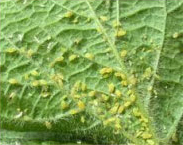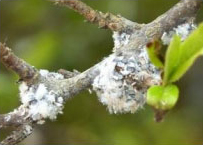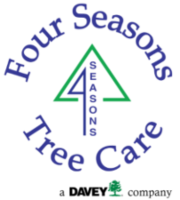HOST PLANTS:
Many aphid species feed on only one plant species, while others feed on hundreds of plant species.
DAMAGE:
Many species of aphids cause the greatest damage when temperatures are warm but not hot. Plants exhibiting aphid damage can have a variety of symptoms, such as decreased growth rates, yellowing, stunted growth, curled leaves, browning, wilting, low yields and death. The removal of sap from the phloem vessels in plants creates a lack of vigor in the plant. Aphids consume an excess of sap to satisfy their nutritional requirements. The excess is expelled as “honeydew”. The coating of plants with honeydew can contribute to the spread of fungi which can damage plants. Honeydew produced by aphids has been observed to reduce the effectiveness of fungicides as well. Aphid saliva is toxic to plants. Aphids frequently transmit disease-causing organisms like plant viruses to their hosts. Once aphid numbers are high and they have begun to distort and curl leaves they will shelter inside hiding from insecticides or natural enemies.
DESCRIPTION AND LIFECYCLE:
Most aphids have soft, green bodies, but other colors are common, such as black, brown and pink. Aphids feed themselves through sucking mouthparts called styles. They have long, thin, two-jointed, two-clawed legs. Aphids have a pair of small upright backward pointing tubes found on the dorsal side of the last segment of the body called cornicles. The life cycle of aphids is complex and varies in different species. In a typical life cycle, several generations of wingless females, which reproduce asexually and bear live offspring, are followed by a generation of winged females. These bear a sexually reproducing, egg-laying generation of males and females. Mating usually occurs in fall. Different host plants and different plant parts may be used at different stages of the life cycle.
CONTROL MEASURES:
Natural enemies include parasitic wasps, lady beetles, lacewings and syrphid fly larvae. Cultural control includes pruning or knocking them off with a strong stream of water. This will also reduce the honeydew. Insecticidal soap, neem and summer oils will provide temporary control and may have to be repeated throughout the season. Approved pesticides may be used to control heavy infestations.


Image Reference: dkbdigitaldesigns.com
